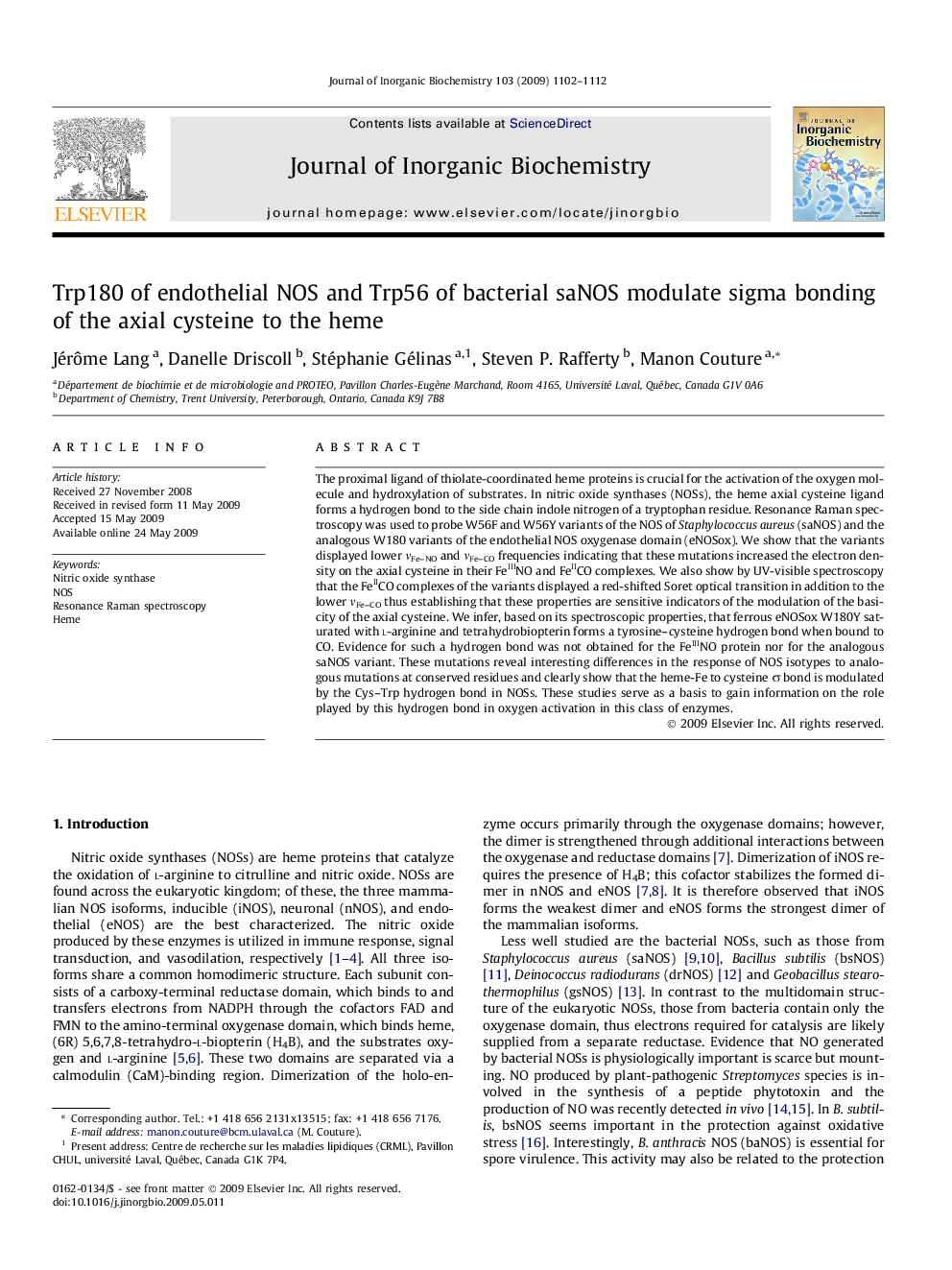| Article ID | Journal | Published Year | Pages | File Type |
|---|---|---|---|---|
| 1318042 | Journal of Inorganic Biochemistry | 2009 | 11 Pages |
Abstract
The proximal ligand of thiolate-coordinated heme proteins is crucial for the activation of the oxygen molecule and hydroxylation of substrates. In nitric oxide synthases (NOSs), the heme axial cysteine ligand forms a hydrogen bond to the side chain indole nitrogen of a tryptophan residue. Resonance Raman spectroscopy was used to probe W56F and W56Y variants of the NOS of Staphylococcus aureus (saNOS) and the analogous W180 variants of the endothelial NOS oxygenase domain (eNOSox). We show that the variants displayed lower νFe-NO and νFe-CO frequencies indicating that these mutations increased the electron density on the axial cysteine in their FeIIINO and FeIICO complexes. We also show by UV-visible spectroscopy that the FeIICO complexes of the variants displayed a red-shifted Soret optical transition in addition to the lower νFe-CO thus establishing that these properties are sensitive indicators of the modulation of the basicity of the axial cysteine. We infer, based on its spectroscopic properties, that ferrous eNOSox W180Y saturated with l-arginine and tetrahydrobiopterin forms a tyrosine-cysteine hydrogen bond when bound to CO. Evidence for such a hydrogen bond was not obtained for the FeIIINO protein nor for the analogous saNOS variant. These mutations reveal interesting differences in the response of NOS isotypes to analogous mutations at conserved residues and clearly show that the heme-Fe to cysteine Ï bond is modulated by the Cys-Trp hydrogen bond in NOSs. These studies serve as a basis to gain information on the role played by this hydrogen bond in oxygen activation in this class of enzymes.
Related Topics
Physical Sciences and Engineering
Chemistry
Inorganic Chemistry
Authors
Jérôme Lang, Danelle Driscoll, Stéphanie Gélinas, Steven P. Rafferty, Manon Couture,
